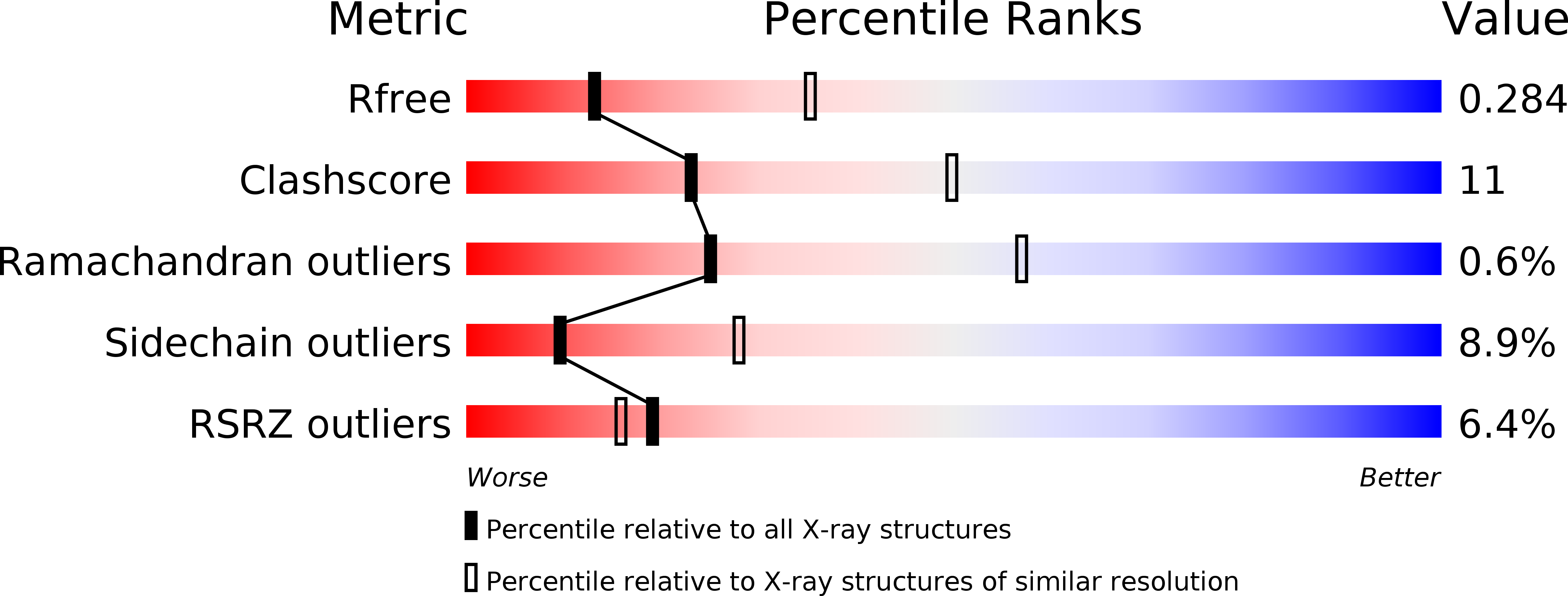Human immunoglobulin E flexes between acutely bent and extended conformations.
Drinkwater, N., Cossins, B.P., Keeble, A.H., Wright, M., Cain, K., Hailu, H., Oxbrow, A., Delgado, J., Shuttleworth, L.K., Kao, M.W., McDonnell, J.M., Beavil, A.J., Henry, A.J., Sutton, B.J.(2014) Nat Struct Mol Biol 21: 397-404
- PubMed: 24632569
- DOI: https://doi.org/10.1038/nsmb.2795
- Primary Citation of Related Structures:
4J4P - PubMed Abstract:
Crystallographic and solution studies have shown that IgE molecules are acutely bent in their Fc region. Crystal structures reveal the Cɛ2 domain pair folded back onto the Cɛ3-Cɛ4 domains, but is the molecule exclusively bent or can the Cɛ2 domains adopt extended conformations and even 'flip' from one side of the molecule to the other? We report the crystal structure of IgE-Fc captured in a fully extended, symmetrical conformation and show by molecular dynamics, calorimetry, stopped-flow kinetic, surface plasmon resonance (SPR) and Förster resonance energy transfer (FRET) analyses that the antibody can indeed adopt such extended conformations in solution. This diversity of conformational states available to IgE-Fc offers a new perspective on IgE function in allergen recognition, as part of the B-cell receptor and as a therapeutic target in allergic disease.
Organizational Affiliation:
King's College London, Randall Division of Cell and Molecular Biophysics, New Hunt's House, Guy's Campus, London, SE1 1UL, UK.

















